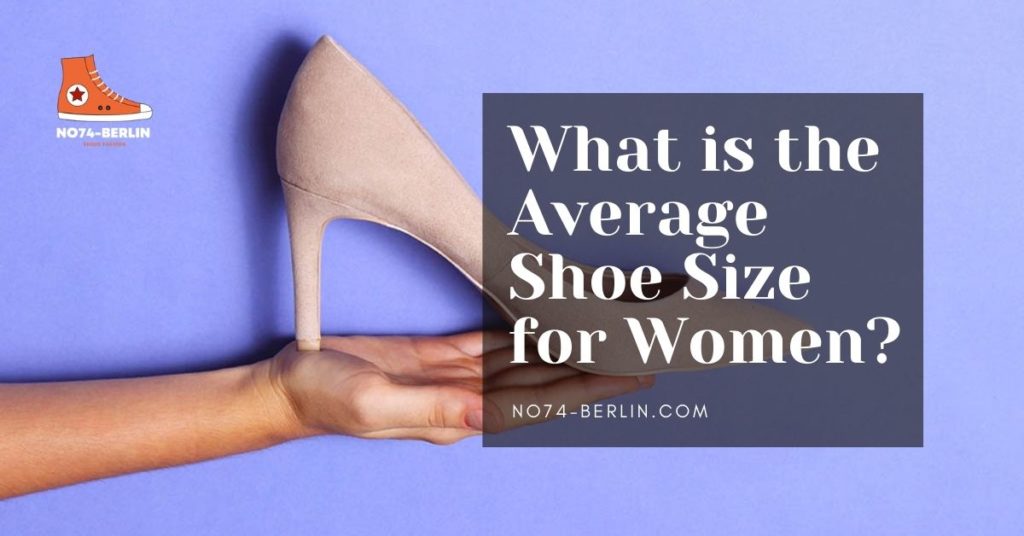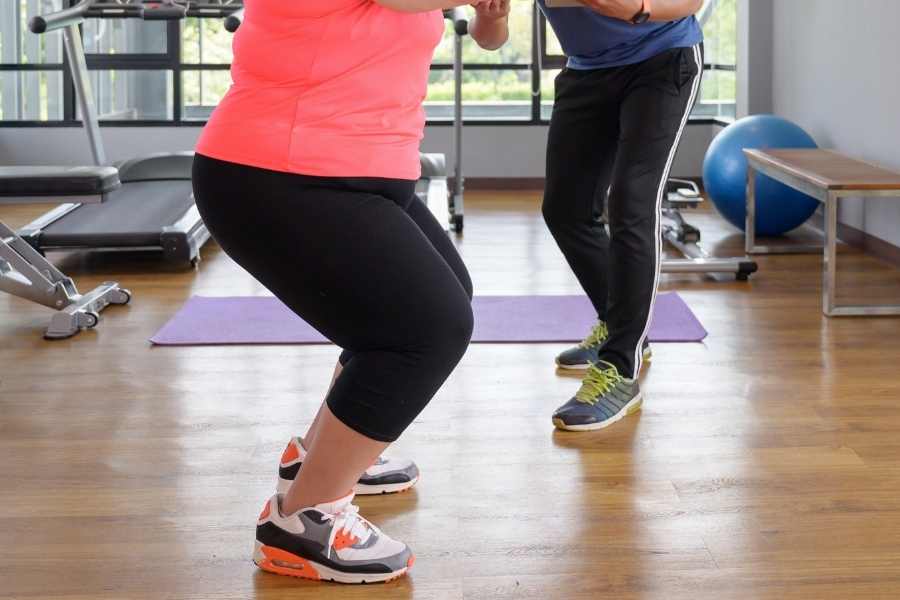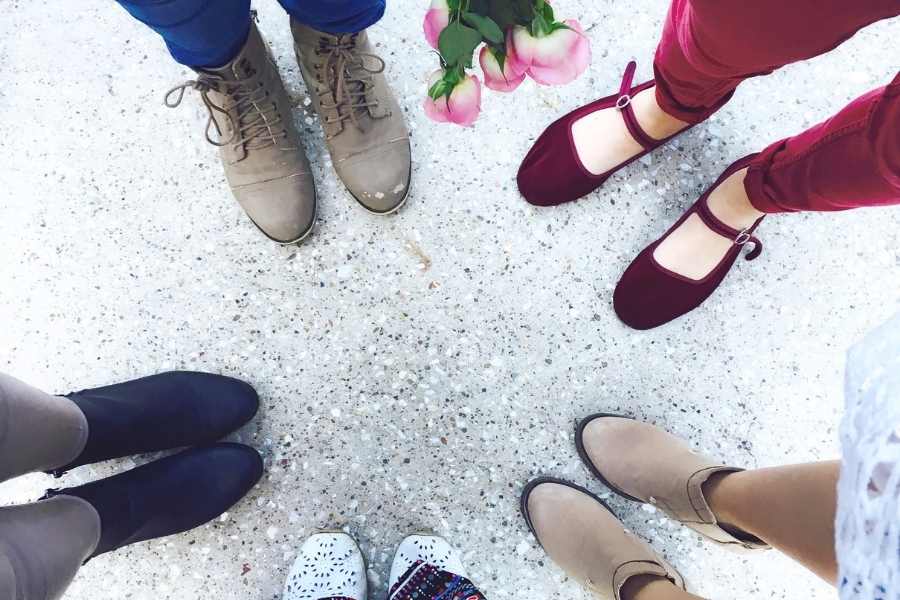There’s no such thing as a universal ”normal” shoe size. If that’s the case, then what is the average shoe size for women? While the average shoe size for women in the United States is around 8.5 or 9, there’s still a lot of variety when it comes to feet. Factors like height and weight influence shoe size, and these values have been on the rise in recent years.

So, what is exactly the average shoe size for women? Geographic plays a big role in determining the average shoe size. A woman’s average shoe size is usually an indication of their Body Mass Index (BMI). So, if a country has shorter and lighter women, then it’s likely that they will buy smaller shoes.
This is why the average shoe size in Asian countries like China is 5.5 to 6, but it is 8.5 or 9 in America.
History of Women’s Shoe Size
The average woman’s shoe size has increased over the past three decades, according to a recent study that you can read on The Wall Street Journal. The increase is within the range of 1.5-2 inches in size difference.
What Causes the Increase in Women’s Shoe Size?
Some reasons as to why the average shoe size for women has been bigger over the years are below. Also, be sure to check our shoe size chart guides to help you understand better what the average shoe size for women is.
1. Being Obese

The obesity rate among women has skyrocketed over the last few decades. With more and more food available, it’s no surprise that they’re consuming even more calories than ever before.
Unfortunately, unhealthy options are most desirable. In America, that means French fries and chocolate cake. The consumption of unhealthy foods has been increasing steadily for years — each decade is more indulgent than the last.
In line with this, as obesity rates are on the rise, the average shoe size has risen along with it.
2. Hereditary

The role that genetic makeup plays in a person’s body mass is one of the most unpredictable aspects of their life. One person may do everything right, and still not have a thin body type; another person may binge on junk food every day for months, and not notice any change in their weight.
The physique and size that we oftentimes inherit also mirror the shoe size that we’ll end up with.
3. Foot Problems

You may be suffering from a kind of foot condition that affects your shoe size choice. Some people have hammertoes, bunions, or even high insteps and they may be looking for larger shoes to support their feet properly. These people may require extra-wide shoes.
4. Being Pregnant

The size of a woman’s feet can change significantly during pregnancy. For many women, foot swelling drives the need for different shoe sizes while pregnant. Indeed, women’s shoe sizes tend to increase by two or three sizes during this phase.
At some point, your feet swell. Some women’s feet swell earlier than others because of genetics, where it’s likely that parents must have the genetic markers for extra-wide feet. Additionally, if the woman is carrying multiples, there’s an increased chance that her feet will likely swell more.
The most widely accepted theory is that the increase in flexibility is due to the hormone relaxin, which loosens up tendons, ligaments, and joint capsules.
The changes in the foot length may arise as your belly grows. As your feet will bear more pressure, the arches will decrease causing the foot length to increase anywhere between 0.1 to 0.4 inches.
5. Menopause

For women, menopause is one of the many reasons why their foot health deteriorates. Thus affects their shoe size.
By age 45, the majority of women experience menopause. It is a natural event that’s marked by a decline in hormone levels.
There are a lot of other changes women go through during menopause — hot flashes, mood swings, and weight gain. What you may not know is that added weight places strain on the feet and can cause a multitude of foot problems, including ingrown nails, corns, calluses, and more.
Therefore, resulting in increased shoe size for women who are usually in their 50s.
What is the Most Common Shoe Size for Women?
There are several factors to consider when answering this question — the most important of which is that there is no universal answer. Depending on the country, the most common foot size can vary substantially: for example, women in the UK have a different most common foot size from those in Australia or the US.
Since taller, bigger people require larger feet to support themselves, it’s only natural that they need larger shoes.
Average height and weight vary by country. Living conditions, nutrition, and cost of living can all account for the varying size and stature of women in different countries.
Looking at the statistics of some of the most successful footwear sellers, we see that their sizes differ greatly — Zara’s most common female foot size is a 7.
Steve Madden doesn’t always carry size 10.5. Shoes made in China are typically sized 7.5–8.5, so you’ll have to look elsewhere if you wear that size.
Based on these data, the most common female foot size would be between 7.5 and 8.
Though women used to felt ashamed of their shoe sizes, in recent years, some of the biggest names in fashion have been rocking big feet: Kate Winslet wears a size 11 shoe; Rihanna wears a size 9. These celebs are making it okay for women to show off their feet and be comfortable in their skin.
What is the Average Shoe Size for Women by Height?

Generally, taller women have bigger shoe sizes than petite women. That is because height and shoe size correlate — a short woman would not wear shoes that are larger than what she needs.
Check out the table below the shows the height and shoe size correlation.
| Height | Shoe size |
| 4’9″ to 5’3″ | 6.5 to 10 |
| 5 to 8.5 | 5’8″ to 6′ or taller |
| 5’4″ to 5’7″ | 9 to 15 |
Many women, especially those in the US, find this chart helpful when deciding on shoe sizes. Because the population is more homogeneous and the bigger sizes are more popular there, it is easier to compare shoe sizes in the US than in other regions.
What is the Average Shoe Size for Women by Age?

As women age and gain weight, they put more pressure on their feet. Once a woman reaches the 50s, their feet may have over 75,000 miles on them—those who live a foot-active life will have even more miles. So once you’re 50, your feet are likely to have lost most of the padding in their soles.
Feet naturally spread out when we grow older. To make up for the difference, women need larger footwear compared to the size she once wore in her 20s.
Women’s feet change rapidly when they’re younger but usually, stop growing after puberty. In most cases when women reach their 20s the average shoe size by age is still at 7.5 to 8.
What is the Average Shoe Size for Women in USA?
The average US women’s shoe size is somewhere between 8.5 and 9.
While this range can vary slightly depending on the source, it holds that most women have an average-sized foot. Why this is important is not only because the shoes have to fit as best as possible — but also because taller women are more likely to wear larger sizes than their shorter counterparts.
So far, science has been able to tell you what may or may not run in your family. But there are still a few things about genetics that researchers haven’t figured out yet.
In a way, just like the three ladies with similar shoe sizes but differing heights and weights can wear the same size of shoe, even two friends who are of similar height can be wearing different shoe sizes.
In other words, each woman’s foot is unique in size, shape, and width. This means that shoe size isn’t enough to ensure that the shoe will fit perfectly and that you’ll need to try on a few different sizes before finding your perfect pair. A shoe size chart can only give you an idea of what size shoes might fit; the best way to ensure your shoes are comfortable is by trying them on.
Conclusion
The average woman’s shoe size has increased by a full shoe size in just 40 years. In the 70s, most women were buying sizes 7 to 7.5, while today, more and more of them are opting for 8-sized shoes.
This shift could be because of two factors: one, our excessive eating habits, which is producing heavier bodies with bigger feet; and two, the shift towards a wider variety of sizing options for footwear.
If you have more questions on the average shoe size for women, feel free to comment them down. I would love to hear your thoughts on this.
Remember, shoe size can change over time for many different reasons. Some factors include pregnancy, menopause, and foot problems. Because of this, it’s essential to measure your feet before you buy new shoes, especially if you plan on purchasing online.
